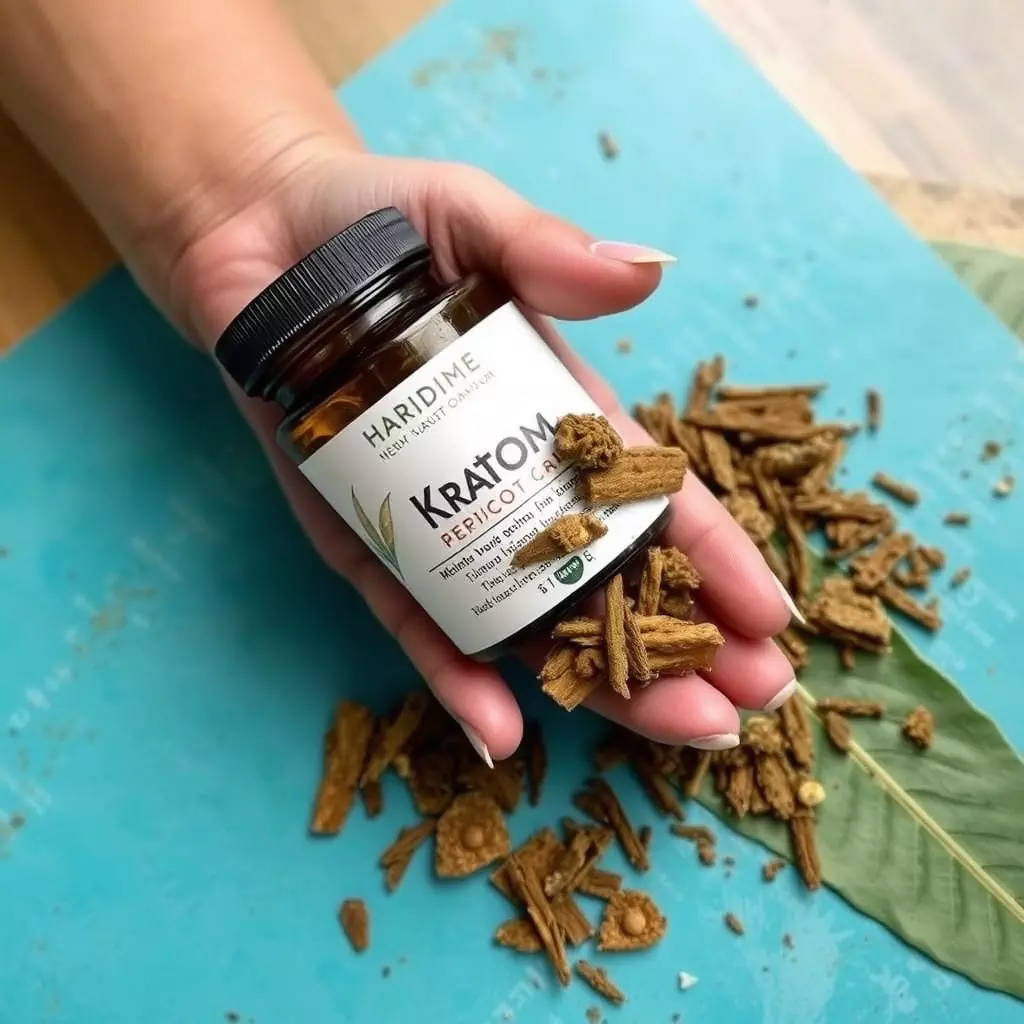Kratom, a plant from Southeast Asia containing the alkaloids mitragynine and 7-hydroxymitragynine, has shown promise for joint pain relief with kratom and easing opioid withdrawal symptoms by engaging with the body's opioid receptors. Its analgesic properties are particularly effective for managing chronic joint pain and associated discomfort, potentially serving as a natural alternative to traditional opioids. The anti-inflammatory effects of kratom may play a role in its pain-relieving benefits, which could be beneficial for conditions such as arthritis. However, it's important for individuals to consult healthcare providers before using kratom, given the nuances of opioid withdrawal and chronic joint pain, and the need for safe treatment planning. While kratom offers a potential avenue for joint pain relief with kratom, its use should be approached with caution due to side effects and regulatory considerations. This summary encapsulates the current understanding of kratom's dual benefits in providing joint pain relief with kratom and assisting with opioid detoxification, a subject of increasing interest in medical research.
explore the multifaceted benefits of kratom, a natural substance gaining attention for its role in alleviating opioid withdrawal symptoms and providing joint pain relief. This article delves into how kratom can be a therapeutic option during detoxification, offering insights into its mechanisms for both conditions. Understanding the science behind kratom’s potential to ease discomfort and soothe joint pain while navigating the challenging phase of opioid withdrawal will be examined, providing valuable knowledge for those seeking alternative relief methods. Join us as we unravel the intricacies of kratom’s dual-beneficial properties in mitigating withdrawal symptoms and offering joint pain relief.
- Kratom's Role in Mitigating Opioid Withdrawal Symptoms and Aiding Joint Pain Relief
- Understanding Kratom: Alleviating Withdrawal and Soothing Joint Discomfort
- The Science Behind Kratom's Potential for Joint Pain Relief During Opioid Detoxification
Kratom's Role in Mitigating Opioid Withdrawal Symptoms and Aiding Joint Pain Relief

Kratom, a tropical evergreen tree native to Southeast Asia, has garnered attention for its potential role in alleviating opioid withdrawal symptoms and offering joint pain relief. The mitigating effects of kratom are primarily attributed to its two main active compounds, mitragynine and 7-hydroxymitragynine. These alkaloids bind to the body’s opioid receptors, which can help in managing withdrawal symptoms by mimicking the action of opioids without the same level of addiction risk. This binding action is crucial for individuals undergoing detoxification, as it may help reduce cravings and lessen the severity of withdrawal effects, which often include anxiety, muscle aches, insomnia, and irritability.
Furthermore, kratom’s analgesic properties make it a candidate for joint pain relief. Users have reported that certain strains of kratom, particularly those higher in mitragynine, can provide significant pain reduction. The anti-inflammatory effects of kratom may contribute to its efficacy in alleviating the discomfort associated with conditions like arthritis or other joint ailments. For individuals seeking alternative solutions for pain management without the side effects of prescription medications, kratom offers a natural approach. It’s important to consult healthcare professionals when considering kratom as part of a treatment plan, especially given the complex nature of both opioid addiction and chronic pain.
Understanding Kratom: Alleviating Withdrawal and Soothing Joint Discomfort

Kratom, a mitragynine-speciosa plant native to Southeast Asia, has garnered attention in discussions surrounding pain management and opioid withdrawal symptom relief. Its efficacy in providing joint pain relief with kratom is attributed to its alkaloid content, which interacts with the body’s opioid receptors. For individuals experiencing the agony of opioid withdrawal, kratom can offer a viable alternative to traditional medication-assisted treatments, easing the distressing symptoms associated with cessation from opioids. The plant’s active compounds bind to opioid receptors in a manner that can mitigate withdrawal symptoms such as anxiety, muscle aches, and insomnia. Additionally, those suffering from joint discomfort may find relief through kratom’s analgesic properties, which can help alleviate chronic joint pain. The therapeutic effects of kratom are thought to be due to its ability to modulate the brain’s response to pain signals, providing a natural form of pain management that can improve overall comfort and well-being without the risk of addiction associated with traditional opioids. Users should approach the use of kratom with caution, as it is not without potential side effects and regulatory considerations; thus, it is advisable to consult healthcare professionals before integrating kratom into any treatment plan for withdrawal or joint pain relief with kratom.
The Science Behind Kratom's Potential for Joint Pain Relief During Opioid Detoxification

Kratom, a plant from Southeast Asia with the botanical name Mitragyna speciosa, has garnered attention for its potential role in managing joint pain relief during opioid detoxification. The mechanisms underlying kratom’s analgesic effects are multifaceted, involving interactions with various neurotransmitter systems within the brain and spinal cord. Alkaloids found in kratom, such as mitragynine and 7-hydroxymitragynine, bind to opioid receptors, mu-opioid receptors in particular, which may help alleviate pain without triggering withdrawal symptoms typically associated with opioid cessation. This binding action can provide relief from joint pain, a common issue among individuals undergoing opioid detoxification, due to the reduced sensation of pain as a result of these interactions.
Furthermore, kratom’s efficacy in joint pain relief during opioid withdrawal may be attributed to its anti-inflammatory properties and its ability to modulate the immune response. Studies suggest that kratom can inhibit certain pro-inflammatory cytokines, which play a role in the inflammation process associated with arthritis and joint pain. This dual action of providing both analgesic and anti-inflammatory effects may make it a promising alternative for individuals seeking joint pain relief while navigating the challenges of opioid detoxification. As research continues to evolve, the potential for kratom to offer significant joint pain relief without the dependency and risks associated with traditional opioids becomes an increasingly interesting avenue for treatment. It is important to consult healthcare professionals when considering the use of kratom as part of a detoxification protocol, given the complexity of individual health conditions and the need for personalized care.
In conclusion, the exploration of kratom’s multifaceted benefits for individuals undergoing opioid withdrawal, particularly its role in mitigating withdrawal symptoms and offering joint pain relief, presents a promising alternative. The scientific community has begun to investigate the mechanisms behind kratom’s potential in providing joint pain relief during detoxification, which could significantly enhance the comfort and success of those transitioning away from opioids. As research continues, it is clear that kratom may offer substantial support for individuals seeking relief from both withdrawal symptoms and chronic joint discomfort. This dual benefit underscores the importance of considering kratom as a viable option in comprehensive treatment plans for opioid detoxification and pain management.






